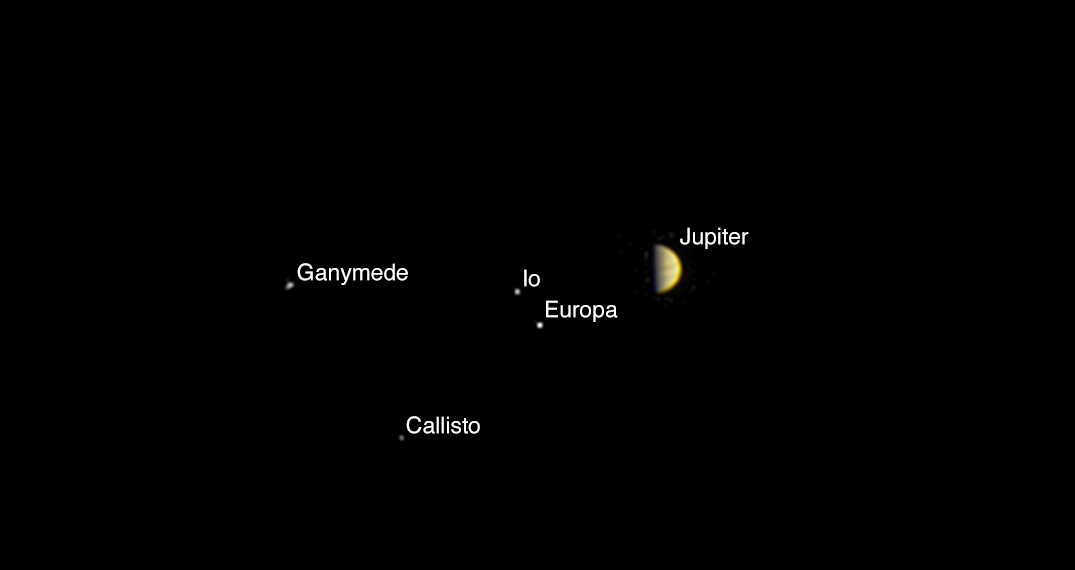Juno Probe Snaps Photo of Jupiter and Its 4 Biggest Moons

Jupiter is starting to come into focus for an approaching NASA spacecraft.
The Juno probe, which is scheduled to begin orbiting Jupiter on Monday (July 4), captured a photo of the huge planet and its four biggest satellites last week.
"As Juno makes its initial approach, the giant planet's four largest moons — Io, Europa, Ganymede and Callisto — are visible, and the alternating light and dark bands of the planet's clouds are just beginning to come into view," NASA officials wrote in a description of the image, which the spacecraft took with its JunoCam instrument on June 21, at a distance of 6.8 million miles (10.9 million kilometers) from Jupiter.
Io, Europa, Ganymede and Callisto are known as Jupiter's Galilean moons, because they were discovered by the famous Italian astronomer Galileo Galilei in the early 1600s. (Astronomers have spotted more than 60 moons orbiting Jupiter to date.)
The $1.1 billion Juno mission, which launched in August 2011, is primarily concerned with mapping out Jupiter's magnetic and gravitational fields and characterizing the gas giant's interior structure — in particular, finding out whether the planet harbors a rocky core. But JunoCam will play a significant role as well, mission scientists have said.
"JunoCam will provide the very first views of Jupiter's poles; we don't know what they look like," Juno principal investigator Scott Bolton, of the Southwest Research Institute in San Antonio, said during a news conference earlier this month. "It will also show the most incredible close-up views of Jupiter ever seen."
If all goes according to plan, Juno will orbit Jupiter 37 times over the course of a roughly 18-month science mission, making a variety of measurements with its nine instruments all the while.
Breaking space news, the latest updates on rocket launches, skywatching events and more!
The spacecraft will then end its life with a dramatic dive into Jupiter's thick atmosphere in February 2018. This suicidal maneuver is intended to ensure that Juno does not contaminate any ocean-harboring Jovian moons — particularly Europa, which is widely considered one of the solar system's best bets to host alien life — with microbes from Earth.
Juno must execute a 35-minute engine burn on Monday night to be captured successfully by Jupiter's gravity.
Follow Mike Wall on Twitter @michaeldwall and Google+. Follow us @Spacedotcom, Facebook or Google+. Originally published on Space.com.

Michael Wall is a Senior Space Writer with Space.com and joined the team in 2010. He primarily covers exoplanets, spaceflight and military space, but has been known to dabble in the space art beat. His book about the search for alien life, "Out There," was published on Nov. 13, 2018. Before becoming a science writer, Michael worked as a herpetologist and wildlife biologist. He has a Ph.D. in evolutionary biology from the University of Sydney, Australia, a bachelor's degree from the University of Arizona, and a graduate certificate in science writing from the University of California, Santa Cruz. To find out what his latest project is, you can follow Michael on Twitter.
